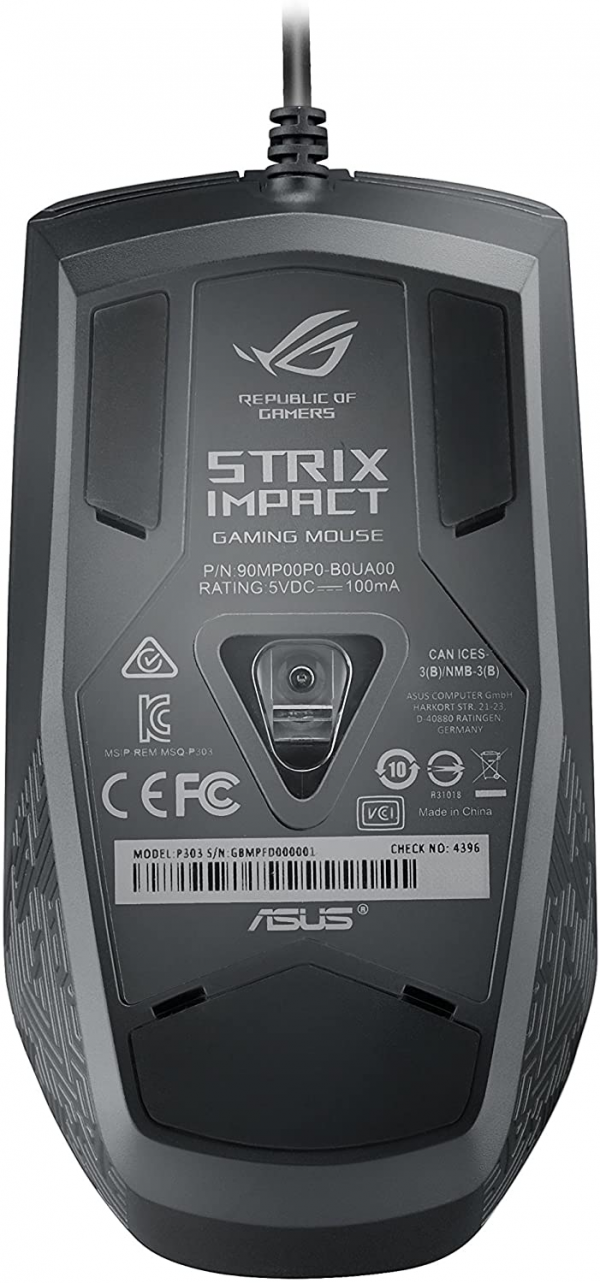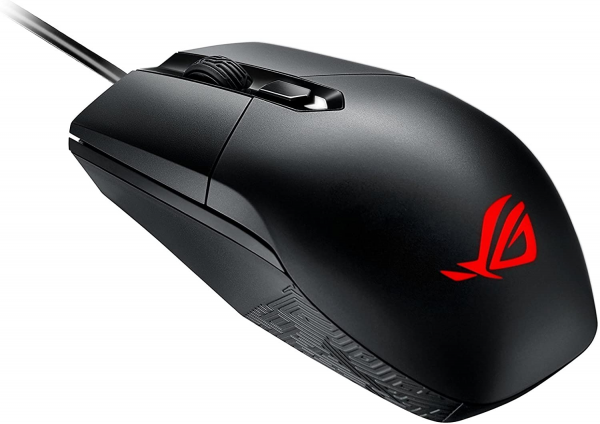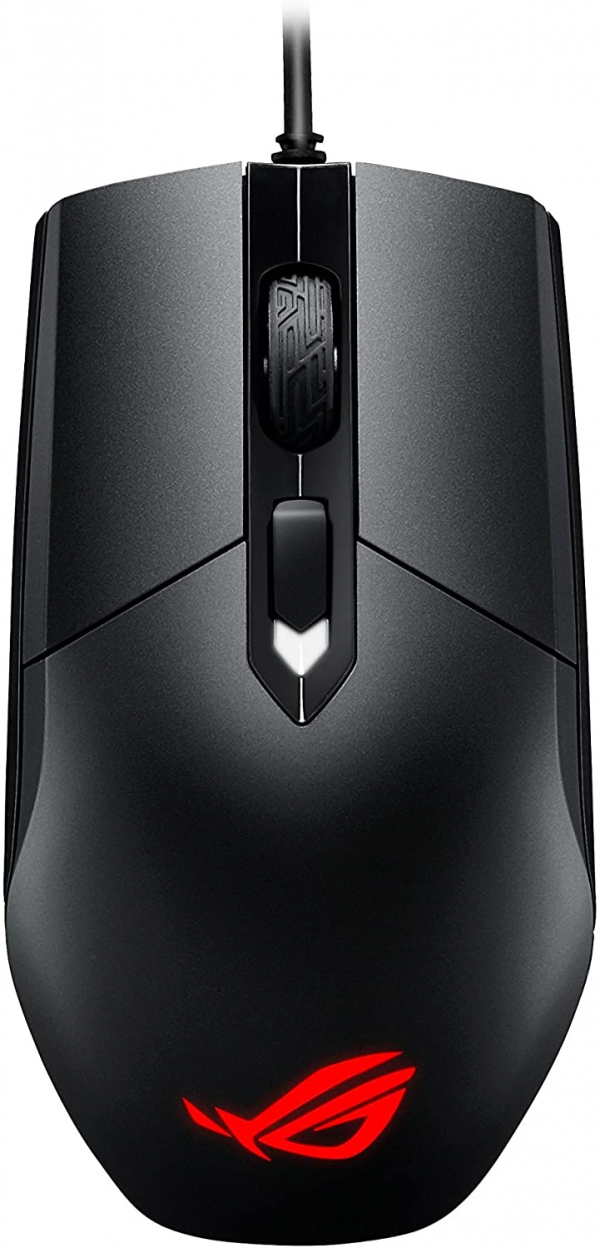Asus ROG
Asus ROG Strix Impact Mouse: Simplicity Has Good
Aprox. 67€ - see price -
See specificationsNot everyone needs a high-end mouse packed with buttons. Sometimes simplicity even has its good and it is with this in mind that Asus designed the Strix Impact which takes the place of the Sica in the ROG (Republic of Gamers) range of the manufacturer. If the newcomer has some new things, everything is not yet perfect.
Positive points
Ambidextrous and agile.
Simple and sober design.
Efficient optical sensor.
Good build quality.
Bad points
No buttons on the edges.
Recognition of areas for improvement.
Only two levels of sensitivity.
Our review
Ergonomics
Aesthetically, the Strix Impact looks a lot like the Sica with its gray metallic shell. The plastics used are of good quality, not very dirty, and the assembly is neat, without visible screws or defect of adjustment. Finished, the small red bands on the top of the slices; the mouse is now black and dark gray. The only potentially colored element, the backlit logo benefits from multicolored light effects, following the great trend of RGB in gamer peripherals.
Like its predecessor, the Sica, the Strix Impact is quite compact and perfectly ambidextrous. Its dimensions of 115 x 52 x 39 mm indeed make it suitable for all hands, even if the larger ones must necessarily hold it with their fingertips.
This is not a handicap, however, because the Strix Impact is intended for rather nervous games, of the Moba type for example. Moreover, its lightness (approximately 81 g without its cable) and its finesse favor a certain liveliness. In terms of handling always, although we can not really talk about very worked ergonomics - the ambidextrous shape necessarily limits the possibilities -, the mixture of roundness at the base of the mouse and more angular shapes towards the 'before is not unpleasant and allows to grasp the mouse.
On the other hand, same criticism as for Sica vis-à-vis the coating of the edges: the slightly grainy plastic is not too slippery, but the relief patterns are only placed at the base of the mouse and only bring so nothing in terms of grip.
Small addition to the Strix Impact, a button above the wheel now allows you to switch on the fly between two sensor sensitivity settings (by default, 1600 dpi and 400 dpi, but these can be modified in the software configuration). A small indicator lights up in white when the second sensitivity level is activated. As often, you have to bend your index or middle finger to reach this button and you will necessarily hesitate to use it as a "sniper" button, for example.
The mouse also offers reactive main buttons, associated with Omron switches. On the other hand, we lose the possibility of changing these and it is a shame, because it ensured a certain ease of repair to the ROG Sica. The Omron D2FC-FK switches used here are however guaranteed for 50 million activations.
The wheel, for its part, turns out to be quite soft, with a fairly light notch, but still marked enough. It does not offer any side scrolling mode, however.
Our biggest regret comes from the absence of edge buttons, which are sorely lacking in games as well as in office use ("previous page" and "next page" functions in the explorer or browser, for example).
As far as gliding is concerned, we can't say that the Strix Impact is silent, but its pads ensure fairly fluid movements, without however providing extraordinary gliding.

Precision
Equipped with the same Pixart PMW3310 optical sensor as the Sica, the Strix Impact is comfortable in all types of play. It offers good performance, capable of operating up to a maximum movement speed of 3.3 m / s and supporting accelerations up to 30 g. Already sufficient performance to ensure operation without stalling.
Likewise, the maximum sensitivity of 5,000 dpi will be enough for the vast majority of players. Indeed, at 5000 dpi, a displacement of one centimeter is enough to make the mouse pointer travel the entire width of a Full HD screen.
The recognition of surfaces is however more capricious and it would be better to use a good mouse pad. Our satin white desk poses a problem for this sensor, just like glass and other transparent and / or reflective surfaces.

Conclusion
The little mouse in the ROG range shows good maneuverability and relies on a fairly efficient optical sensor, as long as you use a good mouse pad. We appreciate the fact that it is ambidextrous, but its excessive simplicity goes as far as the absence of edge buttons which strongly limits the possible uses.

Specifications

